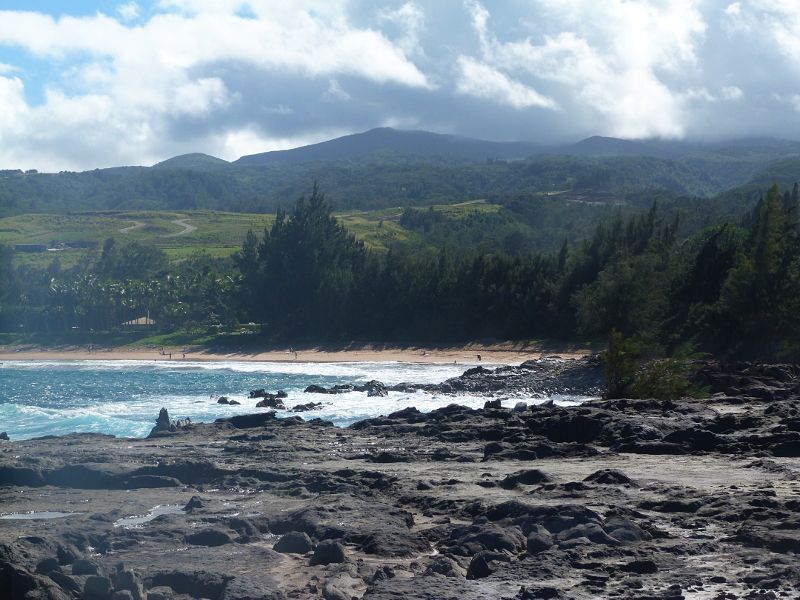Traditional Hawaiians believe that spirits inhabit all parts of nature… air, land, and water. This means that, to them, all parts of the islands are “holy.” This has resulted in a lot of conflicts between traditional values and developers. People on the islands know they rely on a growing tourist trade to power their economy – but every development takes away another sacred piece of Hawaii.
Though every location is sacred, some are more sacred than others. In particular, altars and burial places are considered holy. Tradition says the spirits of the dead stay near their burial sites and watch over the land and residents.
Nowhere on the islands has more dramatically demonstrated this tension than Makalua-Puna Point and Honokahua Bay in northwest Maui. Traditional Hawaiians have always known this is a sacred spot due to its use for burials. It is also a beautiful spot, so when Ritz Carlton was looking to develop a large new hotel, this location was an obvious choice. A land development company got permits in 1986 to start excavation near the beach.
As the digging progressed, it became obvious the area had far more burials than traditional lore reported. Local protests grew as more remains were dug up and removed. This conflict developed before NAGPRA (The Native-American Graves Protection and Repatriation Act was passed. In 1990 this federal was enacted to protect Native-American burial sites and to return human remains and artifacts to modern Native tribes that have been previously removed from burial sites by collectors and archeologists.
The excavation uncovered a hundred bodies… then 200… then 300. Protests increased. With no law in place, the groups were negotiating in a very gray area. By the time an agreement was reached, over 800 human burials had been excavated. Finally an agreement was made. The hotel was built farther back away from the shoreline. A well-maintained golf course covers much of the point, and a 13.6 acre sand dune near the beach was set aside for re-burying the remains. It is covered in grass and people are discouraged from disturbing the site.
Today, visitors can walk along the edge of the golf course to the point where the waves crash and the ocean has sculpted the dense lava into weirdly-beautiful shapes and forms. Signs encourage respectful behavior in this sacred location.
The Idiot group found this spot to be one of the most beautiful and evocative spots they visited. Skirting the golf course, with its windswept trees and manicured turf, they visited “The Dragon’s Teeth.” No need to explain the origin of that name… the pictures tell it all.
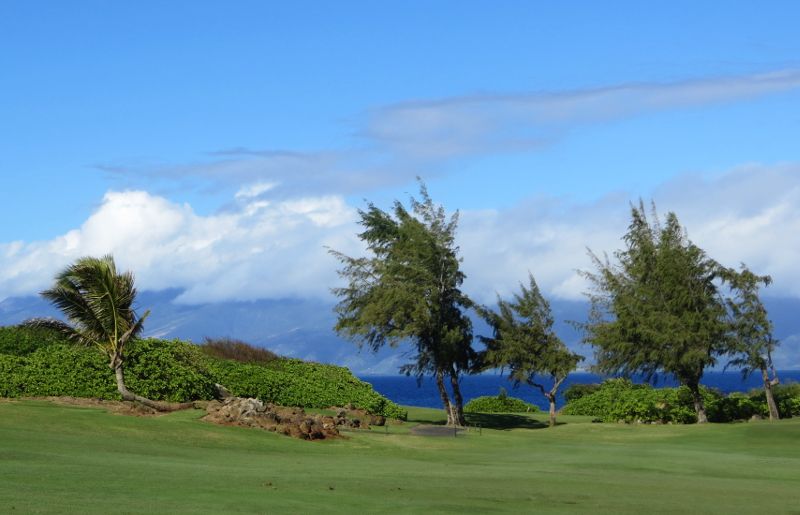
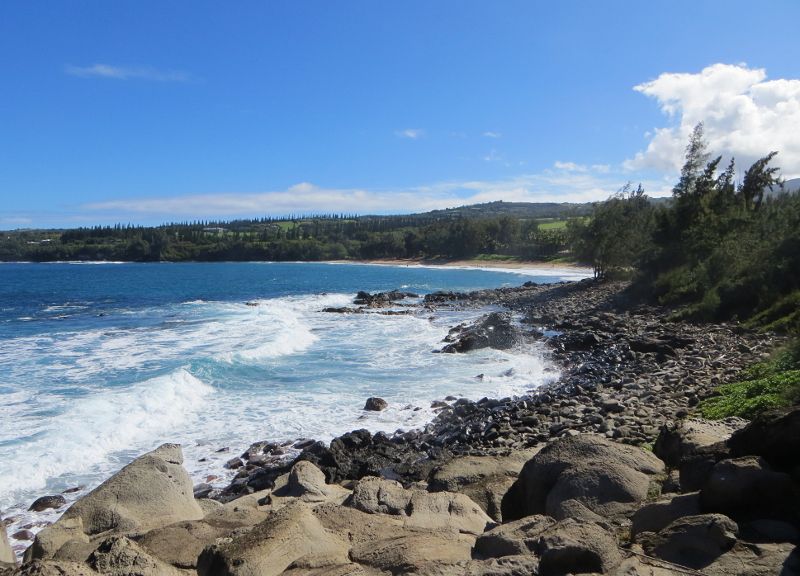
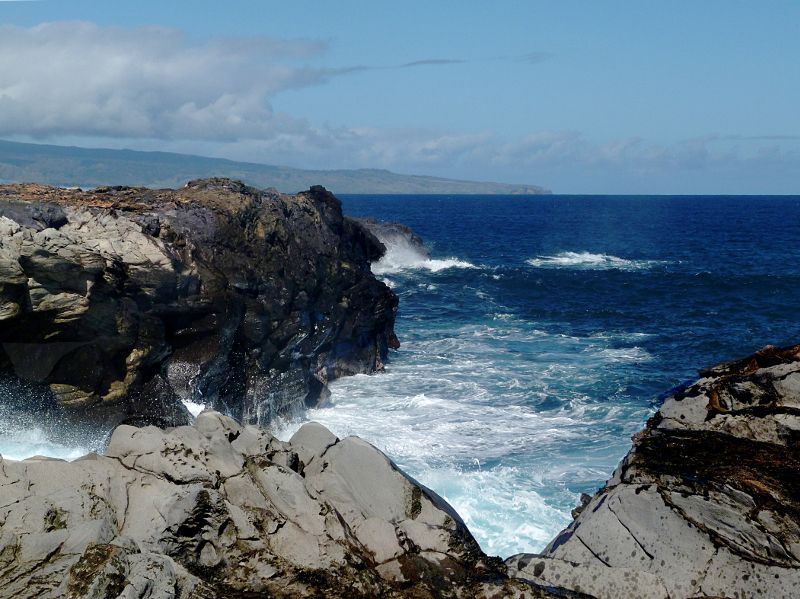
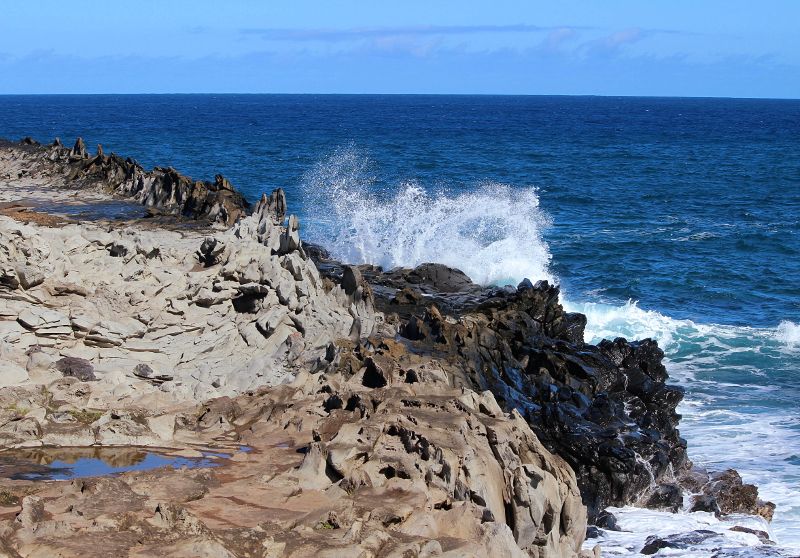
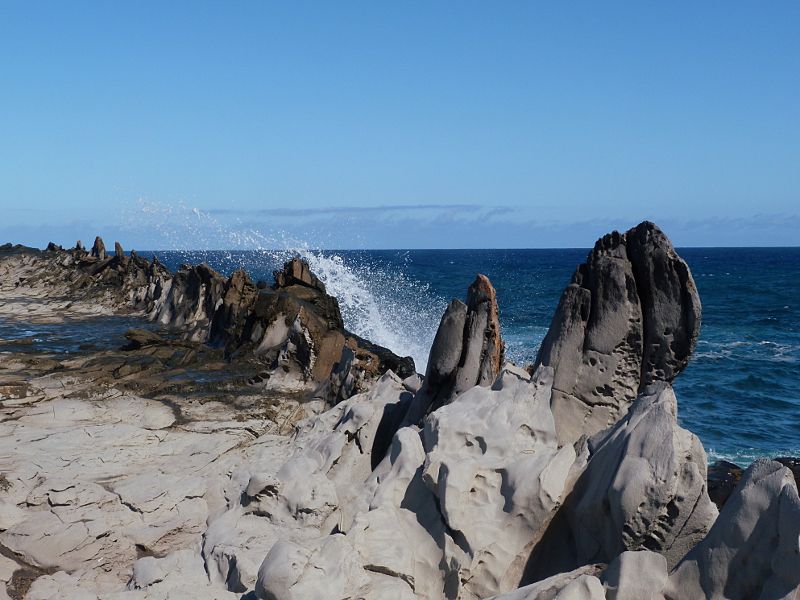
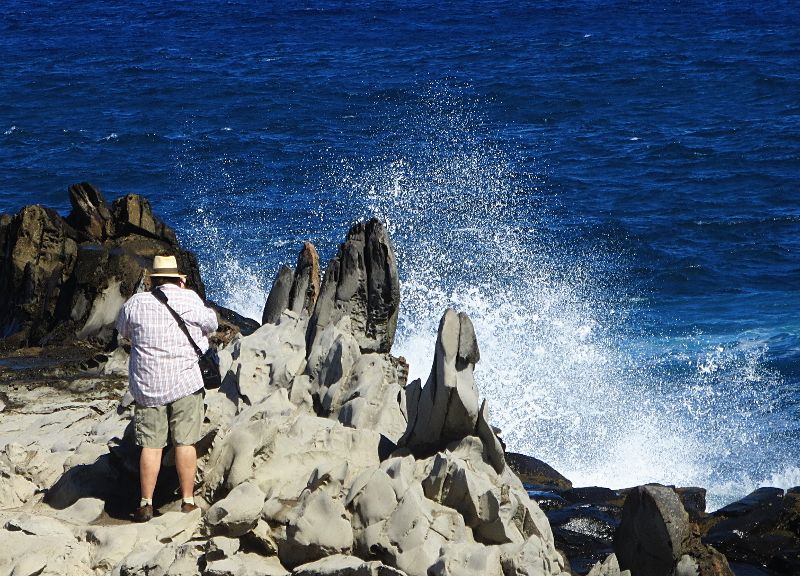
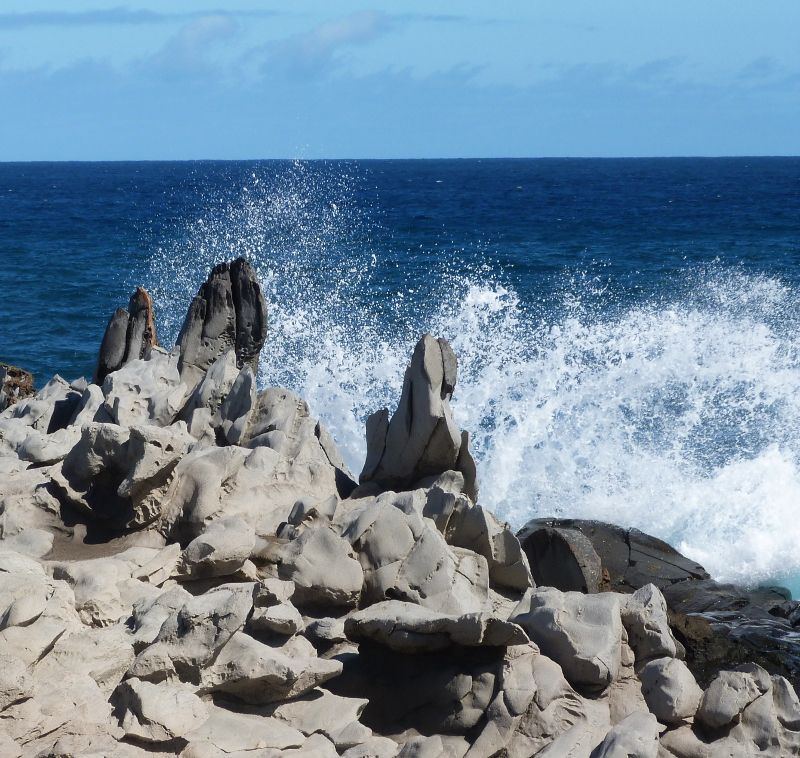
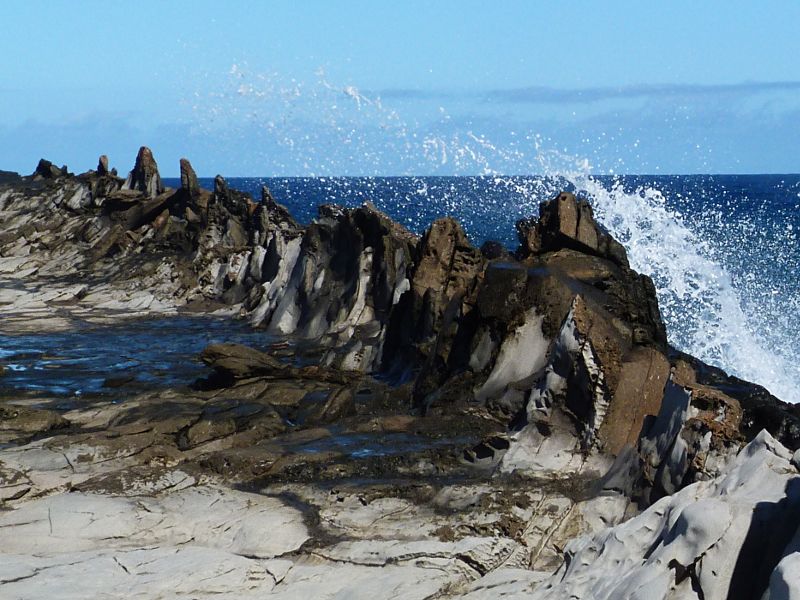
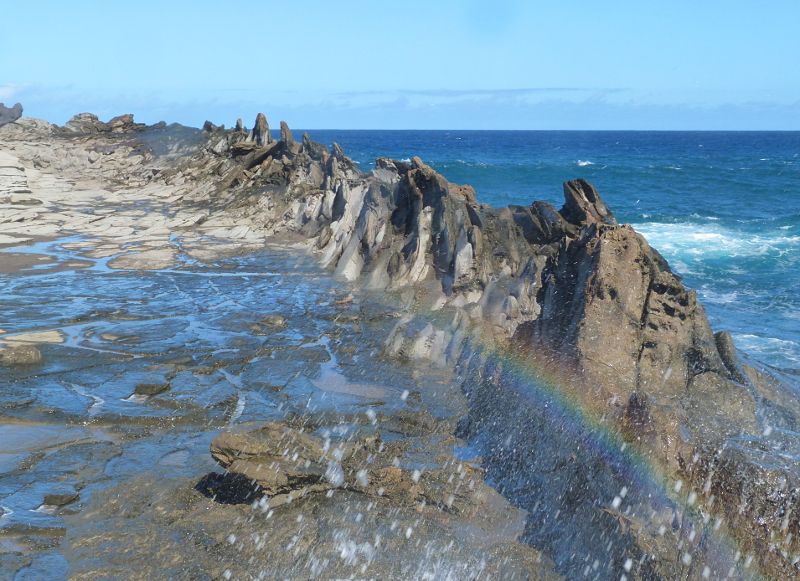
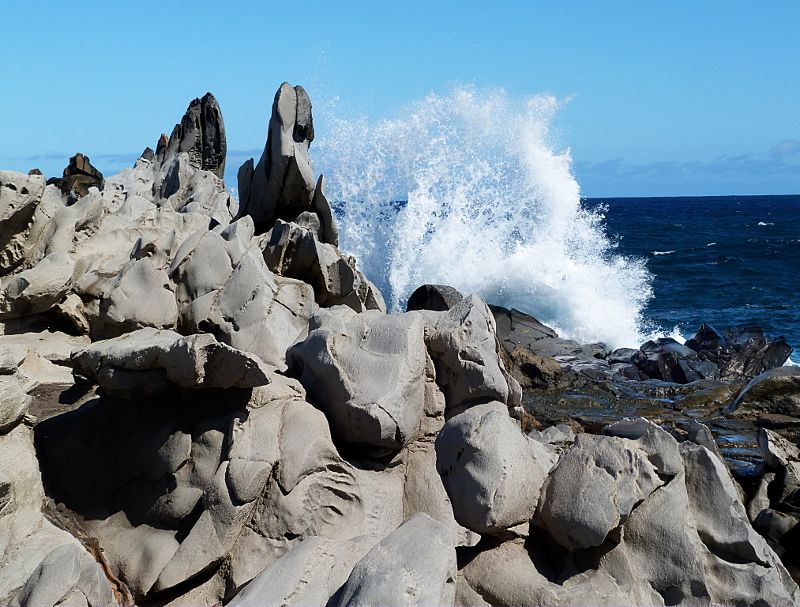
The “teeth” are not the only interesting rock formations… the constant forces of ocean and wind have created endless fascinating variations.
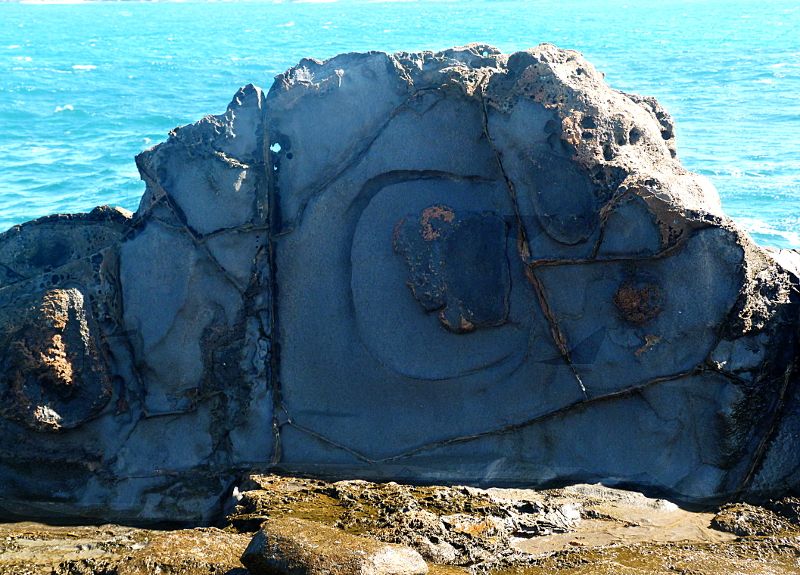
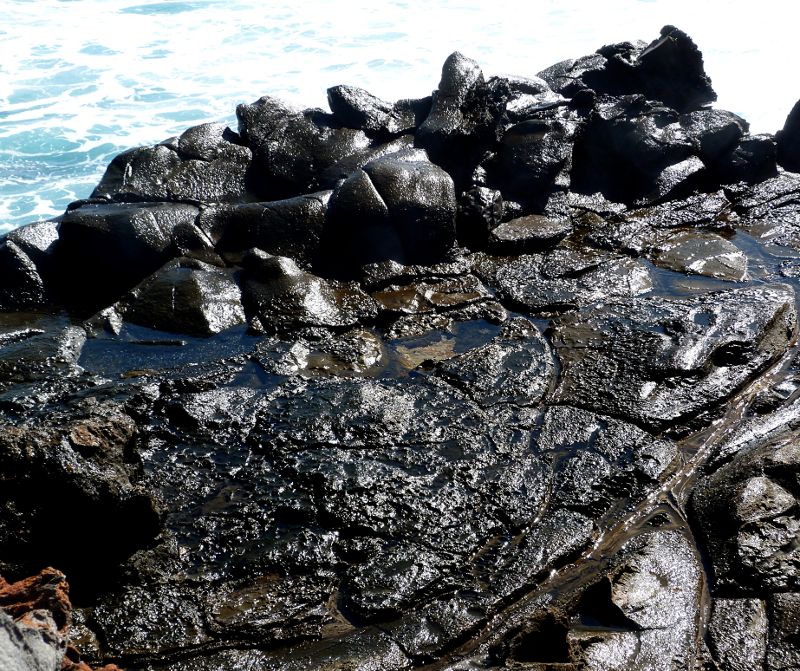
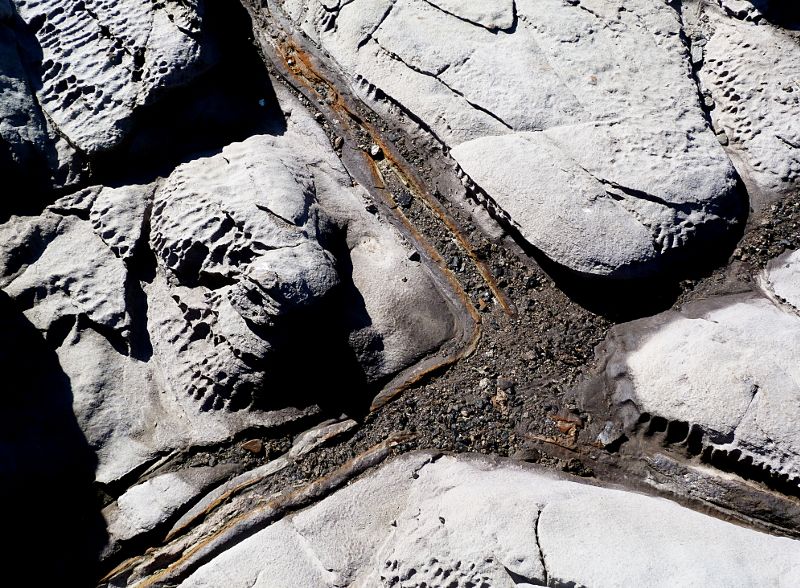
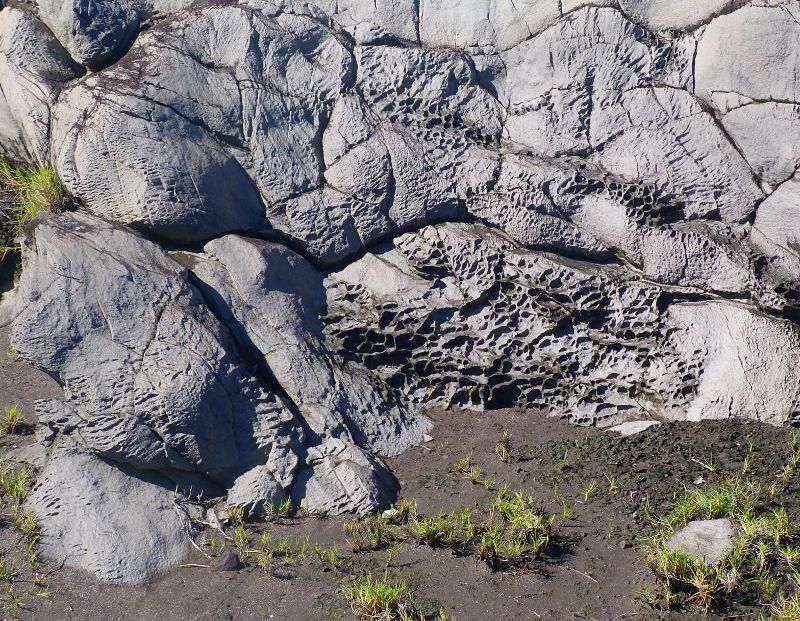
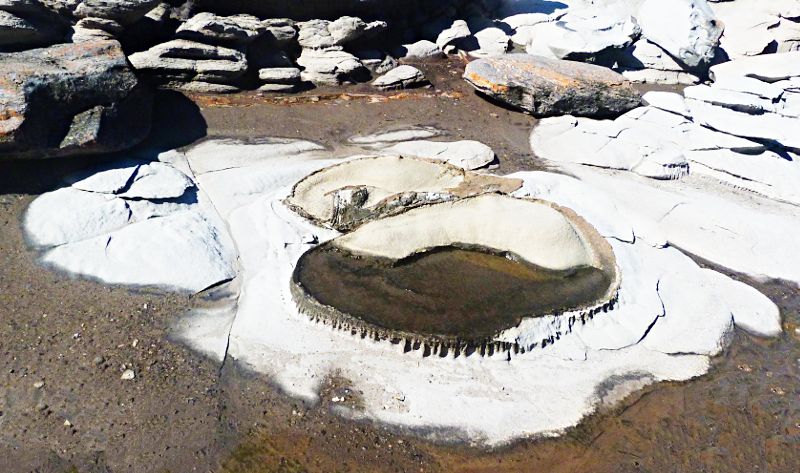
If hundreds of buried and reburied ancient Hawaiians, wind, waves, rock sculptures, a giant hotel, and a golf course are not odd enough roommates – how about a major “New Age” installation to round it all out?!
The cathedral in Chartres, France, has a labyrinth built into its stone floor. The pattern was obscured for centuries by wooden chairs placed for worshippers. In recent times, the labyrinth has been exposed on special days and on Fridays so that people can walk the pattern. There are other ancient labyrinths around the world, but Chartres is the pattern for many modern labyrinths.
No one knows what these patterns were created for, but they have been adopted by the New Age movement as an aid to moving meditation. Some folks believe these are points that focus “energy” of some unspecified form. Some people “dance” or negotiate the paths in complex patterns of short-and-long, back-and-forward steps. Some place “offerings” at the middle.
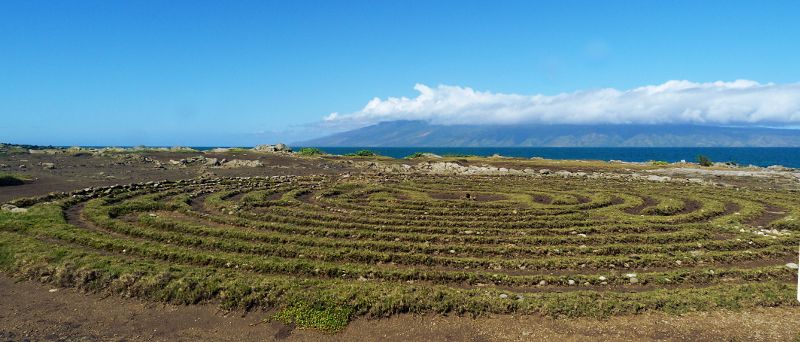
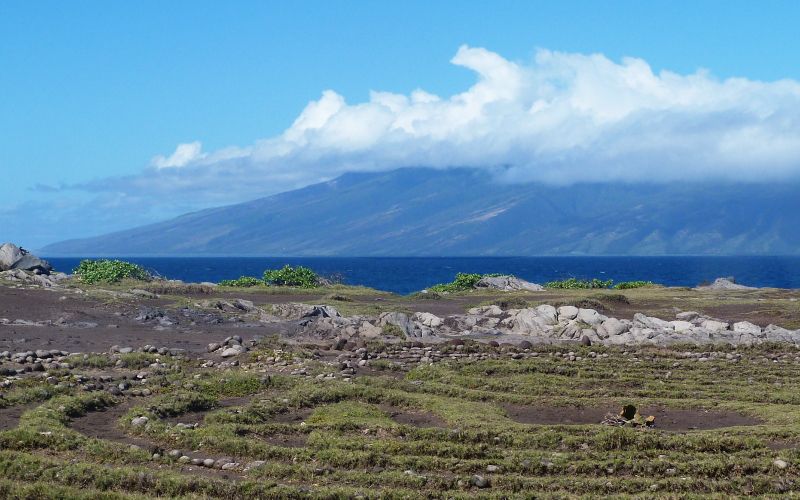
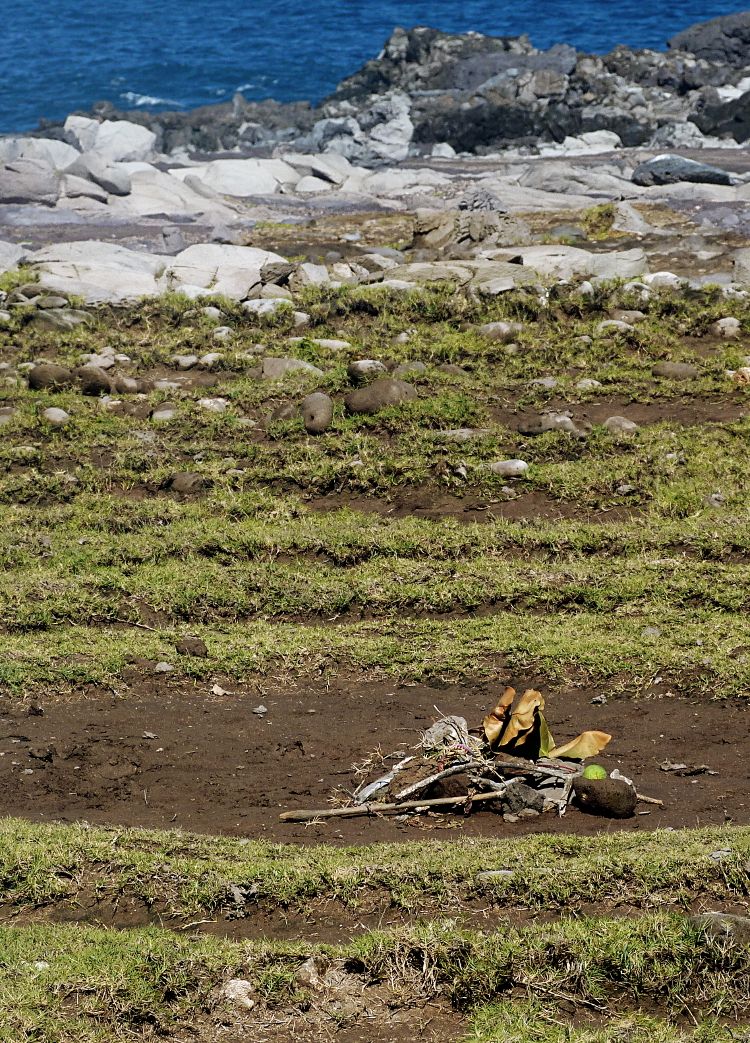
Readers can decide for themselves what they think of this large – reputedly, the largest in the Hawaiian Islands – Chartres-style labyrinth at this location. Idiot He took pictures – but he found it disturbing. Though he considers many of the New Age religious beliefs, including some of the labyrinth-related ones, to be kind of… frankly… “nuts” - He does recognize the benefits of meditation and can see how using the pattern for focus might be considered similar to the forms of Tai Chi, qigong, and yoga. It is a beautiful spot, and the almost constant strong winds and surf put one in close contact with capital-N Nature.
But isn’t the natural beauty enough? Does cutting up sod and arranging white coral into outlines really improve the site? Is it more spiritual because it has piled up rocks? And given the sacred nature of the area to traditional Hawaiians, isn’t it massive chutzpah to inject the elements of a newer, different religious belief system?
Some folks love this labyrinth. Many folks are puzzled by it. Idiot He would have it removed and return the space to its natural appearance if he could. Readers may draw their own conclusions.
